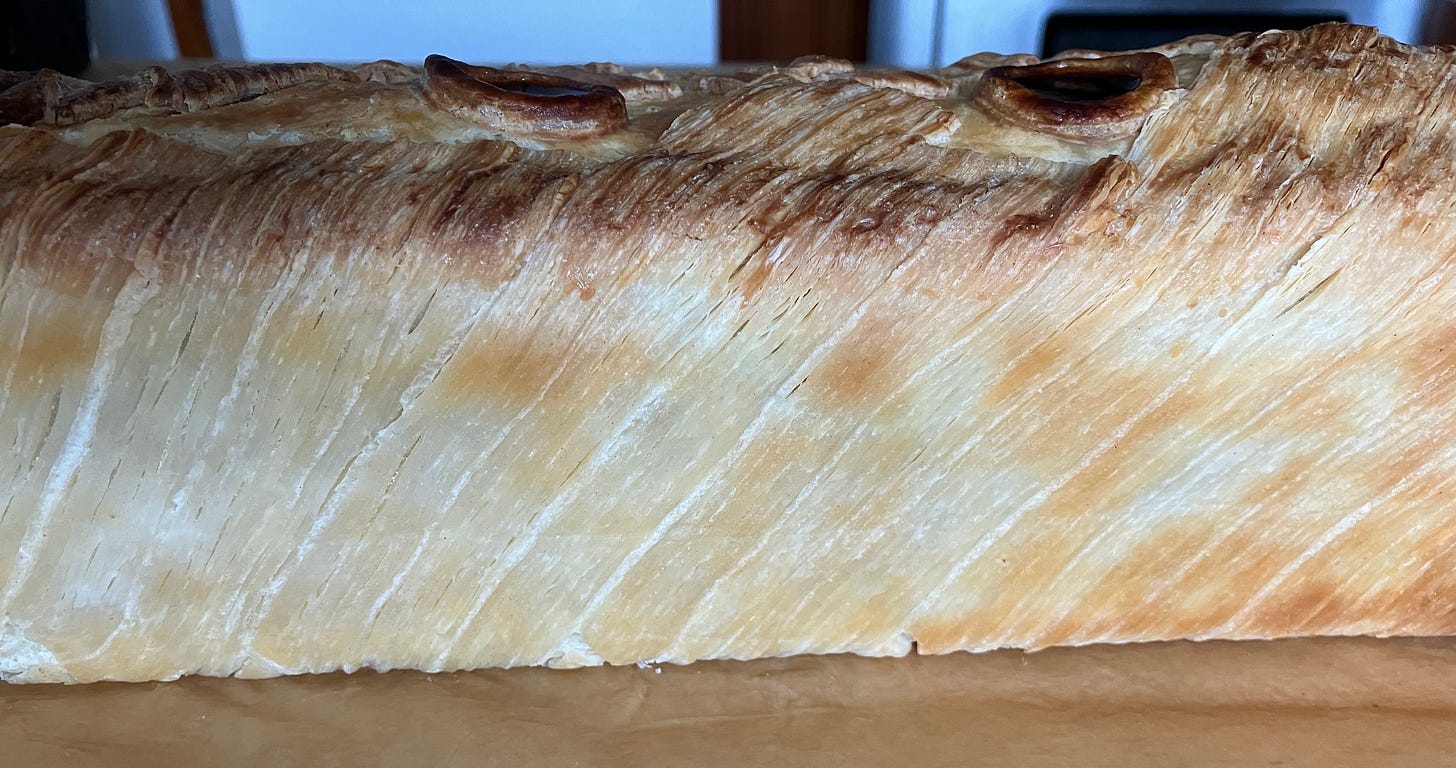sixth slice
Most pâté-croûtes submitted for the competition have decorated sides, the most common approach being marquetry with colored dough. Since I didn’t want my croûte to look like a Louis Vuitton knockoff, I decided to do something even harder, and make it look like an Issey Miyake knockoff instead.
The diagonal bands are puff pastry, cut across the laminations then laid over a foundation of shortcrust in a chevron pattern. Assembling this in high summer was frank idiocy. The butter was melting, everything needed to be colder, things that should have held together fell apart, everything stuck where it shouldn’t have. I felt like I was doing a clown routine with duct tape, but I’m also a clown on a strict countdown.
The only thing better than a terrifying ordeal is a terrifying ordeal with chastening results. At the crown, the puff opened into something almost like woodgrain. But the sides failed to get hot enough for the striations to develop, and the puff became an additional layer of armor – tough, heavy, and pleasureless. Just look at this. I’m fairly crusty, but the pale edges and the thick and graceless border here make me want to cry.
This was a quick and slapdash croûte, made primarily to try out the double crust. It lacked, in addition to browning on the sides, seriousness, intent, and the right quantity of filling, because I was working only with what I had on hand. It succeeded only in establishing just how absurdly fiddly the parquet crust would be, a necessary but profoundly unsatisfying venture.
But there’s a simple answer to a pale crust, which is to turn the dial up to 11. This is so obvious I had to try it, and having suffered through one half-assed parquet assembly, I felt I had to do it right. Sunk cost is the butter in the puff pastry of progress, or something like that. So a few days later, I made no. 6, part 2:
Keep reading with a 7-day free trial
Subscribe to let them eat cake to keep reading this post and get 7 days of free access to the full post archives.


